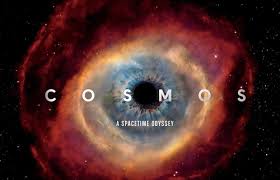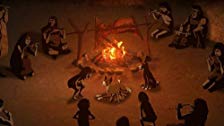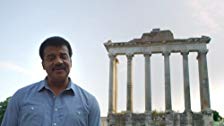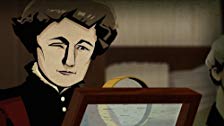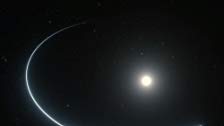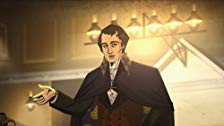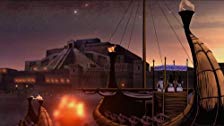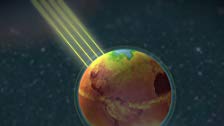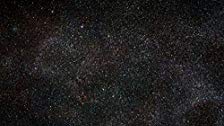Cosmos 2014: Difference between revisions
No edit summary |
|||
| (65 intermediate revisions by the same user not shown) | |||
| Line 1: | Line 1: | ||
__NOTITLE__ | |||
[[Image:Comso_2018.jpg|right]] | [[Image:Comso_2018.jpg|right]] | ||
As I mentioned on the main [[Astronomy |astronomy]] page,I used to like Neil deGrasse Tyson more than I do now. I'm not sure why, but at some point he jumped the shark at some point. The production value is good though, and it's a decent update to the orginal, but it is a pretender to the throne for me. I don’t find that the ideas are as beautifully expressed in the writing, and I don’t find Neil as compelling or inspiring as Carl. It’s not his fault, it’s like star power, you either have it or you don’t, and he just doesn’t. | As I mentioned on the main [[Astronomy |astronomy]] page,I used to like Neil deGrasse Tyson more than I do now. I'm not sure why, but at some point he jumped the shark at some point. The production value is good though, and it's a decent update to the orginal, but it is a pretender to the throne for me. I don’t find that the ideas are as beautifully expressed in the writing, and I don’t find Neil as compelling or inspiring as Carl. It’s not his fault, it’s like star power, you either have it or you don’t, and he just doesn’t. And it’s now clear to me that Carl was the genius behind the original writing, as this show just doesn’t measure up. It’s visually gorgeous, but the content just doesn’t due the predecessor justice. | ||
= Comos (2014) - Neil deGrasse Tyson = | = Comos (2014) - Neil deGrasse Tyson = | ||
| Line 64: | Line 65: | ||
=== Episode 7 - The Clean Room [[Image:3-stars.png|100px]] === | === Episode 7 - The Clean Room [[Image:3-stars.png|100px]] === | ||
[[Image:Cosmos2014_e7.jpg|left]] This episode starts of with the work of Clair Patterson, who’s important work on lead poisoning moved America to unleaded gasoline. But, before finishing that thought, we’re on to calculating the age of the Earth. We start by looking at the layers of sediment in the Grand Canyon, but this is dismissed as incomplete because we don’t know the rate of deposition, as is the Bible, because, religion is silly (I really wish scientist could ignore religion rather than feel that they have to ridicule it as some sort of competition). Instead we look at a Meteor Crater in Arizona, hit by an asteroid made during the formation of the solar system. | [[Image:Cosmos2014_e7.jpg|left]] This episode starts of with the work of Clair Patterson, who’s important work on lead poisoning moved America to unleaded gasoline. But, before finishing that thought, we’re on to calculating the age of the Earth. We start by looking at the layers of sediment in the Grand Canyon, but this is dismissed as incomplete because we don’t know the rate of deposition, as is the Bible, because, religion is silly (I really wish scientist could ignore religion rather than feel that they have to ridicule it as some sort of competition). Instead we look at a Meteor Crater in Arizona, hit by an asteroid made during the formation of the solar system. By looking at the amount of leftover lead in the meteor, and the known rate of decay of uranium, we could date the meteor, and the Earth... To do so he built the first clean room. | ||
All of that was well and good, and entertaining, but then Neil goes onto a 5 minute anti-religion diatribe that I could’ve done without. But, he then moves onto to a discussion of the many ways the Romans used lead, even after they realized it was poisonous. They made their plumbing pipes, lined cooking tools, and many others. We then learn about tetraethyl lead, the anti-knock agent in leaded fuels, like aviation gasoline (100LL), and it’s deleterious effects. Then, again, we’re treated to another 5 minute diatribe about how ‘vested interests’ push agendas. | |||
This is one of the things I liked about the original Cosmos, it didn’t try to preach. This episode tries to claim that “real” scientists are unaffected by worldly concerns. But of course they are, they are sensitive to where their funding comes from and what they believe to be true. I believe that most of them believe they’re doing the right things for the right reasons, but everyone has a agenda. Truth comes from skeptical inquiry and analysis of the data. If the preponderance of the evidence doesn’t demonstrate your conclusion, you need better data. This episode would’ve been really good without the preaching, but ends up coming off as a thought indoctrination film instead. I think that’s its purpose, but when those kids learn to think for themselves their might be a backlash. | |||
</br> | </br> | ||
| Line 73: | Line 76: | ||
=== Episode 8 - Sisters of the Sun [[Image:3.5-stars.png|100px]] === | === Episode 8 - Sisters of the Sun [[Image:3.5-stars.png|100px]] === | ||
[[Image:Cosmos2014_e8.jpg|left]] | [[Image:Cosmos2014_e8.jpg|left]] This episode starts off with a discussion on light pollution. Then we work into another social commentary on how many suck. It starts with the fables of the Pleaides cluster, and how the “seven sisters” were chased by bears, and the gods placed them into the heavens to protect them. Then we move to Harvard in the 1900’s, and how astronomer Edward Pickering changed that by hiring several women to calculate brightness and spectra of stars. Apparently the patriarchy has kept their names from you. Annie Jump Cannon was the leader, and Henrietta Swan Leavitt discovered a way to calculate distances to the stars. Later Cecilia Payne-Gaposchkin arrived and helped determine that the classification system developed there actually showed the temperature of the stars, and that they were mainly made of hydrogen. | ||
Next we learn that men, like Henry Norris Russell, suppressed this work and held Cecilia down. Of course this was because she was a woman (though no such implication was in place for the Hooke/Newton conflict) - and he later admitted she was right when he confirmed it for himself. Next we move on to the destiny of the Sun to become a red giant, and the a white dwarf. Then we learn about nova and supernova. The tail end about super and hyper novae was pretty good, and would’ve saved the show if it had been a little less preachy. | |||
</br> | </br> | ||
| Line 79: | Line 84: | ||
</br> | </br> | ||
=== Episode 9 - The Lost Worlds of Planet Earth [[Image: | === Episode 9 - The Lost Worlds of Planet Earth [[Image:2.5-stars.png|100px]] === | ||
[[Image:Cosmos2014_e9.jpg|left]] | [[Image:Cosmos2014_e9.jpg|left]] This episode kicks off in the carboniforous period, when oxygen on Earth was at its maximum, and insects were huge. Many of these plants were buried without them being able to decompose, particularly the trees, as the lignin didn’t have any critters that could break them down yet. He explains that these buried plant species turned into coal, which was then released in the Permian volcano eruptions, setting off ‘the great dying’. | ||
Next he explains plate tectonics, continental drift, and Pangea. He walks us through the ice ages how this was affected by the orbits of Jupiter and Saturn. Then he wanders off into another climate change diatribe. Seriously. It makes the show unwatchable. | |||
</br> | </br> | ||
| Line 86: | Line 94: | ||
</br> | </br> | ||
=== Episode 10 - The Electric Boy [[Image:3-stars.png|100px]] === | === Episode 10 - The Electric Boy [[Image:3.5-stars.png|100px]] === | ||
[[Image:Cosmos2014_e10.jpg|left]] Neil launches the episode by explaining that instantaneous long-range communication at light speed would seem like sorcery if Michael Faraday hadn’t studied magnetism. He then discusses how a random night at the Royal Institute, and the notes that he made and sent to Humphry Davy, earned him an apprenticeship. | [[Image:Cosmos2014_e10.jpg|left]] Neil launches the episode by explaining that instantaneous long-range communication at light speed would seem like sorcery if Michael Faraday hadn’t studied magnetism. He then discusses how a random night at the Royal Institute, and the notes that he made and sent to Humphry Davy, earned him an apprenticeship. | ||
He soon designed an experiment that demonstrated how electricity could be wielded to create circular motion - the motor. He went on to discover generators, transformers, and for determining that the Earth is really a giant magnet - driven by the iron core spinning. Then James Clerk Maxwell came along an executed the mathematical proofs, and showed that the electric fields are actually waves. | |||
</br> | </br> | ||
| Line 93: | Line 103: | ||
</br> | </br> | ||
=== Episode 11 - The Immortals [[Image: | === Episode 11 - The Immortals [[Image:2-stars.png|100px]] === | ||
[[Image:Cosmos2014_e11.jpg|left]] | [[Image:Cosmos2014_e11.jpg|left]] This episode starts in Iraq, and the Mesopotamian creation of writing - a way to live on in death. As another insult to Christianity he next tells us how the story of Gilgamesh was transformed into the flood myth of Noah.Next he explains how the Nakhla meterorites have been determined to come from Mars. | ||
Next he discusses how our radio waves similarly take our stories out into the universe, and will undoubtedly outlast us. We then wander into yet another global warming parable... so tiresome. And then we relive the bringing of small pox and other germs to the Americas. But the strangest turn is the railing against our “profit driven” economic systems. These evil economic systems supposedly have no incentive for people to not destroy the environment. Apparently Neil doesn’t know any economists. The profit motive actually cures this problem, property rights always solve the tragedy of the commons, and people only pollute the things they have no stake or ownership in. | |||
Then he goes into another LENGTHY dissertation on how we need to bend to “consensus” and stop “denying” that climate change is happening. This is shortly after explaining himself that the core of the scientific method is to be skeptical of all ideas, and challenge all theories, and let the primacy of the data win out. Instead he tells us that we need to do away with the internal combustion engine, and somehow we live as one and eliminate poverty. I assume this means one-world-government. | |||
</br> | </br> | ||
| Line 100: | Line 114: | ||
</br> | </br> | ||
=== Episode 12 - The World Set Free [[Image: | === Episode 12 - The World Set Free [[Image:1-stars.png|100px]] === | ||
[[Image:Cosmos2014_e12.jpg|left]] | [[Image:Cosmos2014_e12.jpg|left]] We kick this episode with a tour of Venus, and it’s green house gases. The carbon dioxide captures the infrared energy inside, and huge atmospheric pressures. All of Venus’ carbon is in gas in the atmosphere, whereas ours is in solid forms locked up (like the white cliffs of Dover) in rock, such as chalk and limestone from biological activity. This is partly because Venus lost it’s oceans to space, we’re told. | ||
We’re then told that Charles David Keeling discovered in 1958 a way to track CO2 in the atmosphere, an linked it to human activity, and then assumed to be linked to climate warming. We’re then treated to ice core samples that show CO2 readings from the Earth’s past. The fact that CO2 levels are so high, and the climate is not warming as fast as predicted (and it was even [https://principia-scientific.org/cooler-2018-contradicts-warmer-climate-models/ recently admitted to have cooled last year] - something we were told wouldn’t happen) is a very inconvenient fact indeed - one the show ignores. And, not only does it assume a general warming trend, it assumes it’s a problem. This assumes we know at what target temperature would become problematic for humans. And every model over-predicts the warming. In fact, we’ve been told we were at the tipping point at least 3 times in my life, which does stretch believability a bit. If it wasn’t true the other two times ([https://www.climatedepot.com/2015/05/04/flashback-1989-un-issues-10-year-global-warming-tipping-point/ 1989], [http://climaterealists.com/index.php?id=3285 2009], and of course [https://realclimatescience.com/2017/11/global-warming-alarmists-recycling-the-identical-idiocy-from-50-years-ago/ cooling in 1969]), why would I believe it now? But the juice DENIAL word is used again, and again. And he goes on to cite the world wide temperature records, without mentioning the scandals that show those have been doctored and “jimmied” to show warming [https://www.telegraph.co.uk/comment/columnists/christopherbooker/6679082/Climate-change-this-is-the-worst-scientific-scandal-of-our-generation.html 1] [https://principia-scientific.org/nasa-exposed-in-massive-new-climate-data-fraud/ 2] [https://www.naturalnews.com/2018-02-22-noaa-caught-again-altering-temperature-data-to-exaggerate-global-warming-hoax.html 3]. In fact, the whole point of this episode was clearly to push the global warming agenda. He even pulls out an 1896 and 1932 and 1938 articles on CO2 and how they would cause global warming, and a nice 1958 TV show. But, having lived through the Global Cooling panic of the 1970’s, my childhood, puts the lie to the “straight-line, well-understood and direct creation of a warming trend since the 1800’s” narrative. Do they think we’re not still alive. You cannot keep using scare tactics to drive your green agenda, you have to use real data. GREED, Neil tells us. GREED!!!!! Come on. If you want to sell that pollution is bad, I’m there. I might even agree to work on CO2 reduction, but this whole narrative is a misleading at best, or a lie at worst, and it destroys your credibility with people who think for themselves rather just signing up to believe the headline. | |||
I particularly love how he tries to justify the difference between weather and climate. This is rich, mostly because they don’t like a cold winter being a problem for global warming, but any large storm is definitively related global warming. You simply can’t have it both ways, Neil. It also is not true that climate is predictable. Every model over predicts the warming, so either we don’t understand it, or we’re getting the worst-case models to drive an agenda. Towards the end, he even uses the “tiping point” argument. He also says it’s not the suns “output”, nicely ignoring the correlations that have, in fact, been made by other scientists to [http://hyperphysics.phy-astr.gsu.edu/hbase/thermo/solact.html sun spot activity], which does very well correlate (and they assert, pointedly, better than CO2 data) to global temperatures. This is why I say this is anti-scientific. There are real scientific disagreements. It <i>might</i> be true that they’re in the minority, but science isn’t “consensus”, let’s bring everyone’s data out into the light of day and argue the merits... and take a hard look at people’s motives. It’s so disingenuous for him to say “it’s clear beyond any reasonable doubt” that we’re responsible for climate change. This isn’t true. There reasonable doubts. I’m OK with him to not believing them, and arguing the data, but this is not how a scientist talks. I’m sorry, it’s just not. | |||
Finally, we’re treated to a discussion on solar power. I’m not against solar, in fact I’m considering it for my home. But it must compete in the market. This is where the carbon tax always comes in, to try to force solar to be competitive by handcuffing other forms of energy. But it overlooks that it would crush global economies by making EVERYTHING more expensive. It’s like Keyesnian’s saying that “breaking windows” creates economic activity (Pro Tip: It doesn’t). It’s like the forced mediocrity of a global guaranteed living incoming. People don’t work if there’s no incentive, and I don’t want to drive the world back into poverty just to satisfy Neil’s believe in anthropomorphic global warming. Frankly, this is the coward’s way out, to assert you’re right and folks need to just believe you. Carl would’ve argued the merits, unafraid of his data. | |||
</br> | </br> | ||
| Line 107: | Line 127: | ||
</br> | </br> | ||
=== Episode 13 - Unafraid of the Dark [[Image:2 | === Episode 13 - Unafraid of the Dark [[Image:2-stars.png|100px]] === | ||
[[Image:Cosmos2014_e13.jpg|left]] | [[Image:Cosmos2014_e13.jpg|left]] This is basically a straight rip-off of the original 1980 episode on the library of Alexandria, with an “egalitarian” spin - that the if the library had been for ‘the people’, perhaps the mob would not have burned it down. | ||
Next we learn about Victor Hess’ detection of solar wind and background radiation/cosmic rays. Fritz Zwicky then learned that when stars die, in supernovae, it shrinks and throws out rays. He also predicted gravitation lensing. He also discovered, and Vera Ruben confirmed, the existence of dark matter whose gravity keeps outer stars in galaxies and keeps them rotating near the same speed as the inner galaxy (unlike a solar system). | |||
Next, we learn about dark energy, the mysterious force in the universe that is overwhelming gravity to keep pushing and accelerating the expansion of the universe - forever. Next we learn about the heliosphere, the place where the solar wind is overwhelmed by the cosmic rays. Then we close with the Voyager picture of Earth from the edge of the solar system, as Neil puts it “a world without borders”. Yep, love one world government... | |||
</br> | </br> | ||
<blockquote>''Description of the two Voyager probes sent for interstellar travel. Tyson ends the series by emphasizing Sagan's message on the human condition in the vastness of the cosmos & to encourage viewers to continue to explore and discover the undiscovered.''</blockquote> | <blockquote>''Description of the two Voyager probes sent for interstellar travel. Tyson ends the series by emphasizing Sagan's message on the human condition in the vastness of the cosmos & to encourage viewers to continue to explore and discover the undiscovered.''</blockquote> | ||
</br> | </br> | ||
Latest revision as of 09:58, 15 January 2020
As I mentioned on the main astronomy page,I used to like Neil deGrasse Tyson more than I do now. I'm not sure why, but at some point he jumped the shark at some point. The production value is good though, and it's a decent update to the orginal, but it is a pretender to the throne for me. I don’t find that the ideas are as beautifully expressed in the writing, and I don’t find Neil as compelling or inspiring as Carl. It’s not his fault, it’s like star power, you either have it or you don’t, and he just doesn’t. And it’s now clear to me that Carl was the genius behind the original writing, as this show just doesn’t measure up. It’s visually gorgeous, but the content just doesn’t due the predecessor justice.
Comos (2014) - Neil deGrasse Tyson
This is the general description of the course/series. It's pretty bald.
An exploration of our discovery of the laws of nature and coordinates in space and time.
Season 1
Currently (April 2019) the only season, but I understand they're planning to make more.
Episode 1 - Standing Up in the Milky Way 
Neil starts the series by reminding us of Carl’s legacy, and giving us a quick overview of the series topics. He also introduces the new starship of the imagination, and the scientific method, and our “cosmic addresses” by touring the galaxy. Next he introduces us to Copernicus and the heliocentric solar system. Next he reintroduces the Cosmic Calendar, and walks us through the overview of it’s important dates. He closes with the cute story about how he met Carl on a visit to Cornell.
A thrilling, new adventure across space and time begins.
Episode 2 - Some of the Things That Molecules Do 
This begins this series description of artificial selection, with the domestication of animals, to do our work and be our companions. He then moves on to natural selection by talking about brown bears versus polar bears (with the usual bunk about Global Warming and their possible extinction - setting aside the fact that the population is booming, and ignoring the evidence that we’re not warming anywhere near as fast as the models predict, and that it’s likely related to solar maxima and minima).
Even worse, a little over halfway through he goes on a bit of diatribe about how the theory evolution is fact, just like the theory of gravity. This is the trap I dislike so much. Science does not offer us facts. We have theories that match the data, and we keep them until we find a better theory or better data. So, yes, I believe gravity and evolution are our current best theories, but I leave open the possibility that a better theory exists.
Artificial selection is one example, eyes another, of the well-documented and inescapable process of evolution--change in a population of species over time--by natural selection. These are some of the things that molecules do.
Episode 3 - When Knowledge Conquered Fear 
This episode starts out with a discussion of our ancient ancestors recognizing the seasonal patterns in the heavens and using them, and the near universal fear of comets as a portent of doom. He then discusses the discovery by Jan Oort that they originate in a cloud (now named for him) 1 light year from the sun, at the outer edge of our solar system, and that their orbits often cross the orbits of the planets.
He moved onto to Hook, Wren, Halley, and Newton, spending a considerable amount of time on the publishing of Newton’s Principia, a tour de force. This one book not only outlined how gravity allowed the sun to trap planets in it’s orbit, it created calculus along the way. Next he outlines the many unheralded contributions from Halley, including the distance from the Earth to the Sun (using a transit of Venus), populations statistics, weather forecasting, and precession. He then does a thought experiment on what happens if you enter a black hole.
Neil deGrasse Tyson sets off on the Ship of the Imagination to chase a single comet through its million-year plunge toward Sol. Later, Tyson visits the birth-place of Sir Isaac Newton and retraces the unlikely friendship between Newton and brilliant polymath Edmond Halley. It was Halley's patience and generosity which allowed Newton to conquer his fear of isolation and find the courage to publish his masterwork, "Principia Mathematica" which launched a scientific revolution.
Episode 4 - A Sky Full of Ghosts 
This episode starts with Sir William Herschel explaining to his son that the light from distant stars take so long to reach us, that they might have already died before we see the. He then explains how the Earth’s atmosphere bends light enough that sunrise is an optical illusion, it shows the sun 2 minutes before it is actually above the horizon. He then walks us through observable objects up to 13.8 billion light years away - the light from shortly after the Big Bang.
Next he explains the life cycle of stars, and how the early stars fusion built heavier elements, and their deaths scatted those elements around them to create the basis for future planet formation. Next he explains that gravity is a field, and that Maxwell demonstrated that it is just like electrical and magnetic fields that Faraday had proved existing, and that they all travel at the speed of light. This leads us naturally to Einstein and the ideas of relativity. Next we introduce Herschel’s ‘dark stars’-black holes, and their extreme gravity.
Explores how light, time and gravity affects our perception of the universe
Episode 5 - Hiding in the Light 
This episode kicks off with some feel-good nonsense about Mozi (master of light), a Chinese general that traveled the world preaching peace, love, and forced equality. I thought the comments by Tyson that “science needs the light of free expression to flourish, it depends on the fearless questioning of authority, the open exchange of ideas...” were particularly sad. I wish he believed that, but I don’t {here is a good article on why}, because in videos like this we’re meant to accept not only that climate change is happening (which is undoubtedly always true, ice age to ice age) but also to the conclusions of anthropomorphic origin and generic upward trending, which there is plenty of data to at least question (and, contrary to popular myth, plenty of scientists who do).
Next, we move on to Basra, Iraq and Ibn al-Alhazen who also studied light in “the golden age of Islam”. He created a camera obscura as well, and this lead to the development of the telescope. Next we see Newton discovering the spectrum, and Herschel’s discovery of infrared light. Next he describes how Fraunhofer discovered the wavelengths of light - and spectroscopy. From here we’re introduced to atoms, and how light waves are absorbed to change electron orbits, and then remitted with the missing bar characterizing the element.
The Ship of the Imagination travels back in time to reveal 11th century Europe and North Africa during the golden age of Islam, when brilliant physicist Ibn al-Haytham discovered the scientific method and first understood how we see, and how light travels. Later, William Herschel discovers the infrared and the signature hidden in the light of every star, eventually unlocking one of the keys to the cosmos.
Episode 6 - Deeper, Deeper, Deeper Still 
This episode is about atoms, and we start by talking about evaporation and condensation, and then move inside a dew drop to see it’s microscopic life. Then we travel into the cells of leaves and plants to see how they perform photosynthesis. And then we get another gratuitous global warming plug. Then we’re on to how molecules in the air allow us to smell.
Then we’re off to Greece, Thales and Democritus, who stated the Cosmos should be governed by natural laws. Then we learn about carbon it’s ability to bond with nearly every other atom to build more complex molecules. Then he covers nuclear structure of proton, electrons, and neutrons. Then we on to the sun, and fusion. He tells us the sun is 10 million degrees, hot enough to fuse hydrogen, but not helium. Stars big enough to do that create carbon and oxygen, and diffuse them in their old age to be used by other stars. He then tells us that about once a century a very large star goes supernova and create all of the heavier atoms from iron.
Next we learn about neutrinos. He then tells us how neutrinos were detected 3 hours before we saw the nova that created them in 1987a. Wolfgang Pauli hypothesized that the neutrino must exist.
The Ship of the Imagination ventures on an epic voyage to the bottom of a dewdrop to explore the universe on the smallest scale and observe exotic life forms invisible to the naked eye. Then, host Neil deGrasse Tyson explains the neural network in our brains which determine our sense of smell and memory, and later, he travels deep beneath the surface of the Earth to discover the most mysterious particle we know.
Episode 7 - The Clean Room 
This episode starts of with the work of Clair Patterson, who’s important work on lead poisoning moved America to unleaded gasoline. But, before finishing that thought, we’re on to calculating the age of the Earth. We start by looking at the layers of sediment in the Grand Canyon, but this is dismissed as incomplete because we don’t know the rate of deposition, as is the Bible, because, religion is silly (I really wish scientist could ignore religion rather than feel that they have to ridicule it as some sort of competition). Instead we look at a Meteor Crater in Arizona, hit by an asteroid made during the formation of the solar system. By looking at the amount of leftover lead in the meteor, and the known rate of decay of uranium, we could date the meteor, and the Earth... To do so he built the first clean room.
All of that was well and good, and entertaining, but then Neil goes onto a 5 minute anti-religion diatribe that I could’ve done without. But, he then moves onto to a discussion of the many ways the Romans used lead, even after they realized it was poisonous. They made their plumbing pipes, lined cooking tools, and many others. We then learn about tetraethyl lead, the anti-knock agent in leaded fuels, like aviation gasoline (100LL), and it’s deleterious effects. Then, again, we’re treated to another 5 minute diatribe about how ‘vested interests’ push agendas.
This is one of the things I liked about the original Cosmos, it didn’t try to preach. This episode tries to claim that “real” scientists are unaffected by worldly concerns. But of course they are, they are sensitive to where their funding comes from and what they believe to be true. I believe that most of them believe they’re doing the right things for the right reasons, but everyone has a agenda. Truth comes from skeptical inquiry and analysis of the data. If the preponderance of the evidence doesn’t demonstrate your conclusion, you need better data. This episode would’ve been really good without the preaching, but ends up coming off as a thought indoctrination film instead. I think that’s its purpose, but when those kids learn to think for themselves their might be a backlash.
To determine the true age of the Earth, geochemist Clair Patterson developed the uranium-lead dating method to make an unprecedented discovery - calculating Earth's age of 4.5 billion years. But Patterson's groundbreaking discoveries were just beginning. Patterson made it his mission to draw public attention to the detrimental effects of lead in the environment and dedicated his career to fighting against the petroleum and chemical industry, eventually achieving public health's biggest victory of the 20th century.
Episode 8 - Sisters of the Sun 
This episode starts off with a discussion on light pollution. Then we work into another social commentary on how many suck. It starts with the fables of the Pleaides cluster, and how the “seven sisters” were chased by bears, and the gods placed them into the heavens to protect them. Then we move to Harvard in the 1900’s, and how astronomer Edward Pickering changed that by hiring several women to calculate brightness and spectra of stars. Apparently the patriarchy has kept their names from you. Annie Jump Cannon was the leader, and Henrietta Swan Leavitt discovered a way to calculate distances to the stars. Later Cecilia Payne-Gaposchkin arrived and helped determine that the classification system developed there actually showed the temperature of the stars, and that they were mainly made of hydrogen.
Next we learn that men, like Henry Norris Russell, suppressed this work and held Cecilia down. Of course this was because she was a woman (though no such implication was in place for the Hooke/Newton conflict) - and he later admitted she was right when he confirmed it for himself. Next we move on to the destiny of the Sun to become a red giant, and the a white dwarf. Then we learn about nova and supernova. The tail end about super and hyper novae was pretty good, and would’ve saved the show if it had been a little less preachy.
Explores the violent cosmic phenomenon of supernovas, which on average occur once per galaxy per century or one billion times per year in the observable universe.
Episode 9 - The Lost Worlds of Planet Earth 
This episode kicks off in the carboniforous period, when oxygen on Earth was at its maximum, and insects were huge. Many of these plants were buried without them being able to decompose, particularly the trees, as the lignin didn’t have any critters that could break them down yet. He explains that these buried plant species turned into coal, which was then released in the Permian volcano eruptions, setting off ‘the great dying’.
Next he explains plate tectonics, continental drift, and Pangea. He walks us through the ice ages how this was affected by the orbits of Jupiter and Saturn. Then he wanders off into another climate change diatribe. Seriously. It makes the show unwatchable.
The Ship of the Imagination embarks on a journey through space and time to grasp how the autobiography of the Earth is written in its atoms, its oceans, its continents and all living things. Later, American geologist Marie Tharp creates the first true map of Earth's ocean floor, and discovers microscopic life that exists deep beneath the ocean.
Episode 10 - The Electric Boy 
Neil launches the episode by explaining that instantaneous long-range communication at light speed would seem like sorcery if Michael Faraday hadn’t studied magnetism. He then discusses how a random night at the Royal Institute, and the notes that he made and sent to Humphry Davy, earned him an apprenticeship.
He soon designed an experiment that demonstrated how electricity could be wielded to create circular motion - the motor. He went on to discover generators, transformers, and for determining that the Earth is really a giant magnet - driven by the iron core spinning. Then James Clerk Maxwell came along an executed the mathematical proofs, and showed that the electric fields are actually waves.
Travel to 19th century England and meet Michael Faraday, a child of poverty who grew up to invent the motor and the generator. His ideas about electricity and discovery of magnetic fields changed the world and paved the way for future scientists to make giant strides in the world of high technology and instantaneous communication.
Episode 11 - The Immortals 
This episode starts in Iraq, and the Mesopotamian creation of writing - a way to live on in death. As another insult to Christianity he next tells us how the story of Gilgamesh was transformed into the flood myth of Noah.Next he explains how the Nakhla meterorites have been determined to come from Mars.
Next he discusses how our radio waves similarly take our stories out into the universe, and will undoubtedly outlast us. We then wander into yet another global warming parable... so tiresome. And then we relive the bringing of small pox and other germs to the Americas. But the strangest turn is the railing against our “profit driven” economic systems. These evil economic systems supposedly have no incentive for people to not destroy the environment. Apparently Neil doesn’t know any economists. The profit motive actually cures this problem, property rights always solve the tragedy of the commons, and people only pollute the things they have no stake or ownership in.
Then he goes into another LENGTHY dissertation on how we need to bend to “consensus” and stop “denying” that climate change is happening. This is shortly after explaining himself that the core of the scientific method is to be skeptical of all ideas, and challenge all theories, and let the primacy of the data win out. Instead he tells us that we need to do away with the internal combustion engine, and somehow we live as one and eliminate poverty. I assume this means one-world-government.
The Ship of the Imagination travels across the cosmos to discover the possibility of beings that live forever and explain why other civilizations perish. Then, visit the Cosmic Calendar of the Future and contemplate what lies ahead with a hopeful vision.
Episode 12 - The World Set Free 
We kick this episode with a tour of Venus, and it’s green house gases. The carbon dioxide captures the infrared energy inside, and huge atmospheric pressures. All of Venus’ carbon is in gas in the atmosphere, whereas ours is in solid forms locked up (like the white cliffs of Dover) in rock, such as chalk and limestone from biological activity. This is partly because Venus lost it’s oceans to space, we’re told.
We’re then told that Charles David Keeling discovered in 1958 a way to track CO2 in the atmosphere, an linked it to human activity, and then assumed to be linked to climate warming. We’re then treated to ice core samples that show CO2 readings from the Earth’s past. The fact that CO2 levels are so high, and the climate is not warming as fast as predicted (and it was even recently admitted to have cooled last year - something we were told wouldn’t happen) is a very inconvenient fact indeed - one the show ignores. And, not only does it assume a general warming trend, it assumes it’s a problem. This assumes we know at what target temperature would become problematic for humans. And every model over-predicts the warming. In fact, we’ve been told we were at the tipping point at least 3 times in my life, which does stretch believability a bit. If it wasn’t true the other two times (1989, 2009, and of course cooling in 1969), why would I believe it now? But the juice DENIAL word is used again, and again. And he goes on to cite the world wide temperature records, without mentioning the scandals that show those have been doctored and “jimmied” to show warming 1 2 3. In fact, the whole point of this episode was clearly to push the global warming agenda. He even pulls out an 1896 and 1932 and 1938 articles on CO2 and how they would cause global warming, and a nice 1958 TV show. But, having lived through the Global Cooling panic of the 1970’s, my childhood, puts the lie to the “straight-line, well-understood and direct creation of a warming trend since the 1800’s” narrative. Do they think we’re not still alive. You cannot keep using scare tactics to drive your green agenda, you have to use real data. GREED, Neil tells us. GREED!!!!! Come on. If you want to sell that pollution is bad, I’m there. I might even agree to work on CO2 reduction, but this whole narrative is a misleading at best, or a lie at worst, and it destroys your credibility with people who think for themselves rather just signing up to believe the headline.
I particularly love how he tries to justify the difference between weather and climate. This is rich, mostly because they don’t like a cold winter being a problem for global warming, but any large storm is definitively related global warming. You simply can’t have it both ways, Neil. It also is not true that climate is predictable. Every model over predicts the warming, so either we don’t understand it, or we’re getting the worst-case models to drive an agenda. Towards the end, he even uses the “tiping point” argument. He also says it’s not the suns “output”, nicely ignoring the correlations that have, in fact, been made by other scientists to sun spot activity, which does very well correlate (and they assert, pointedly, better than CO2 data) to global temperatures. This is why I say this is anti-scientific. There are real scientific disagreements. It might be true that they’re in the minority, but science isn’t “consensus”, let’s bring everyone’s data out into the light of day and argue the merits... and take a hard look at people’s motives. It’s so disingenuous for him to say “it’s clear beyond any reasonable doubt” that we’re responsible for climate change. This isn’t true. There reasonable doubts. I’m OK with him to not believing them, and arguing the data, but this is not how a scientist talks. I’m sorry, it’s just not.
Finally, we’re treated to a discussion on solar power. I’m not against solar, in fact I’m considering it for my home. But it must compete in the market. This is where the carbon tax always comes in, to try to force solar to be competitive by handcuffing other forms of energy. But it overlooks that it would crush global economies by making EVERYTHING more expensive. It’s like Keyesnian’s saying that “breaking windows” creates economic activity (Pro Tip: It doesn’t). It’s like the forced mediocrity of a global guaranteed living incoming. People don’t work if there’s no incentive, and I don’t want to drive the world back into poverty just to satisfy Neil’s believe in anthropomorphic global warming. Frankly, this is the coward’s way out, to assert you’re right and folks need to just believe you. Carl would’ve argued the merits, unafraid of his data.
Degrasse discusses our nearest neighboring planet Venus and its climate, the climate change on Earth and if it is caused by humans.
Episode 13 - Unafraid of the Dark 
This is basically a straight rip-off of the original 1980 episode on the library of Alexandria, with an “egalitarian” spin - that the if the library had been for ‘the people’, perhaps the mob would not have burned it down.
Next we learn about Victor Hess’ detection of solar wind and background radiation/cosmic rays. Fritz Zwicky then learned that when stars die, in supernovae, it shrinks and throws out rays. He also predicted gravitation lensing. He also discovered, and Vera Ruben confirmed, the existence of dark matter whose gravity keeps outer stars in galaxies and keeps them rotating near the same speed as the inner galaxy (unlike a solar system).
Next, we learn about dark energy, the mysterious force in the universe that is overwhelming gravity to keep pushing and accelerating the expansion of the universe - forever. Next we learn about the heliosphere, the place where the solar wind is overwhelmed by the cosmic rays. Then we close with the Voyager picture of Earth from the edge of the solar system, as Neil puts it “a world without borders”. Yep, love one world government...
Description of the two Voyager probes sent for interstellar travel. Tyson ends the series by emphasizing Sagan's message on the human condition in the vastness of the cosmos & to encourage viewers to continue to explore and discover the undiscovered.
